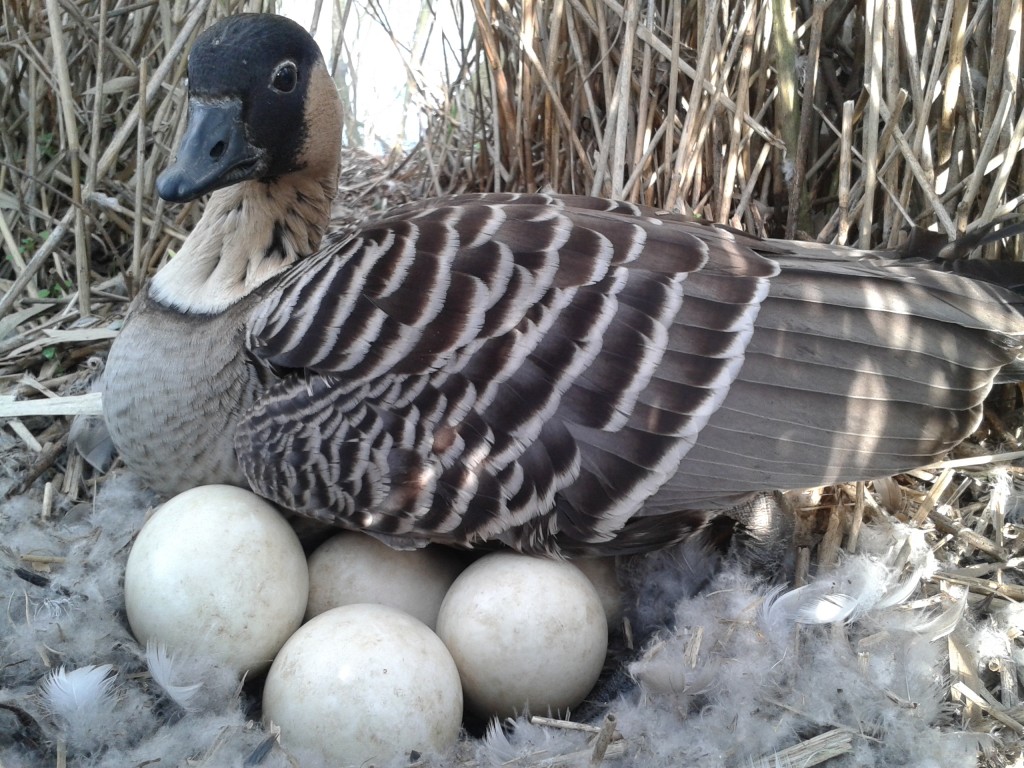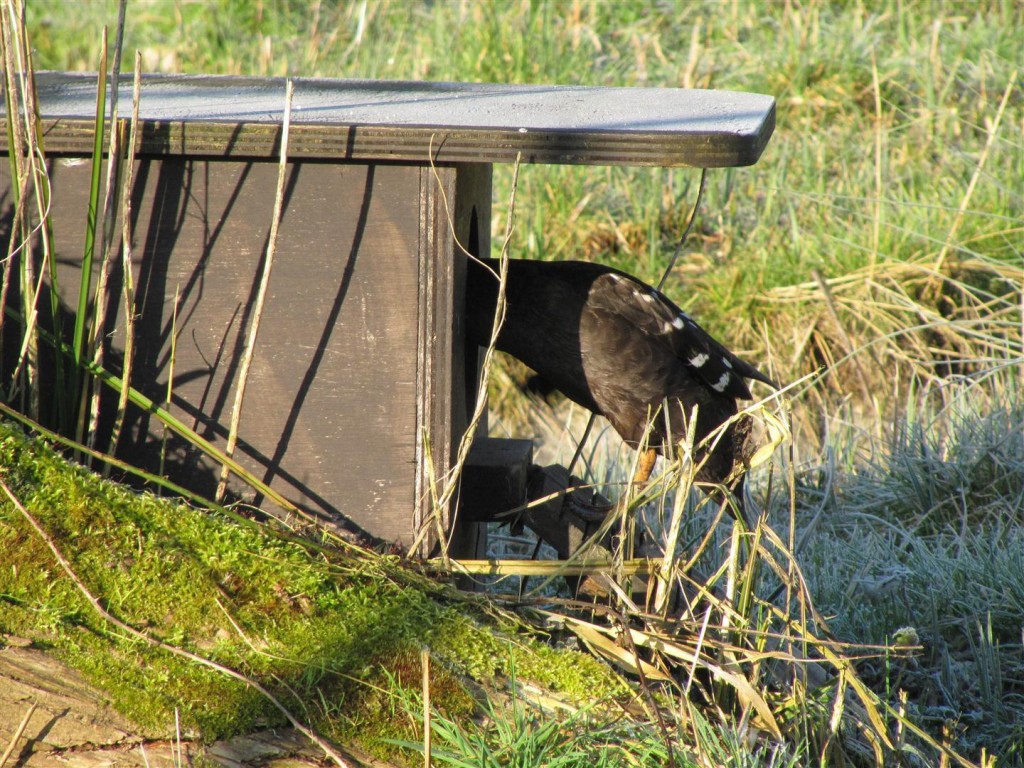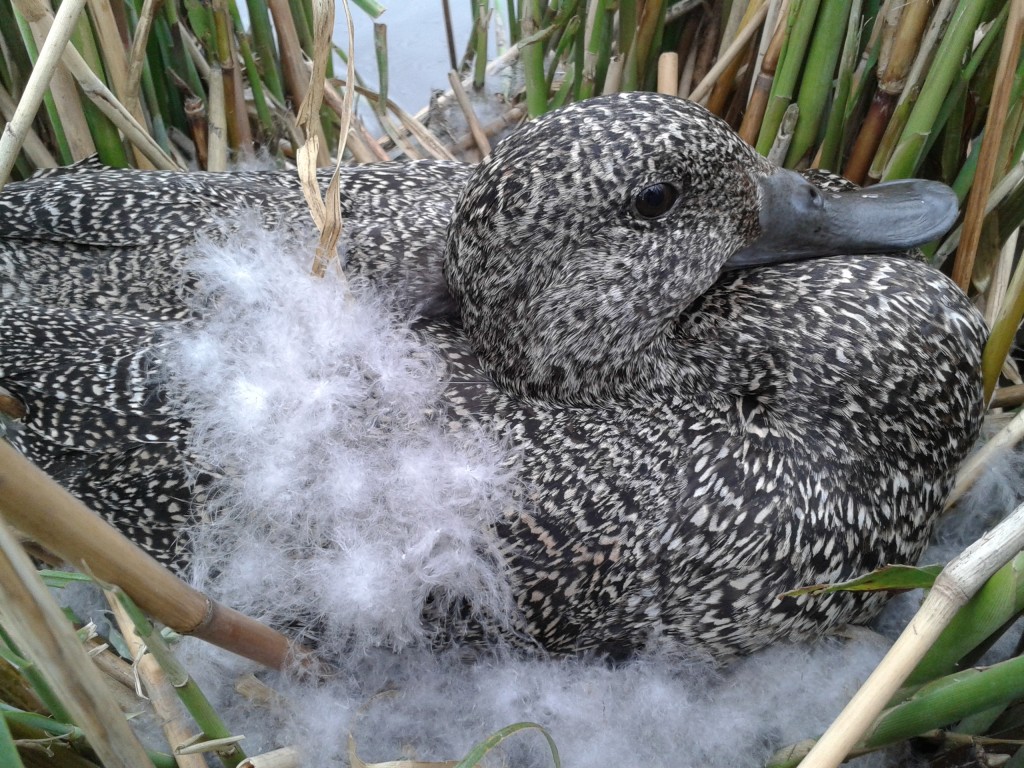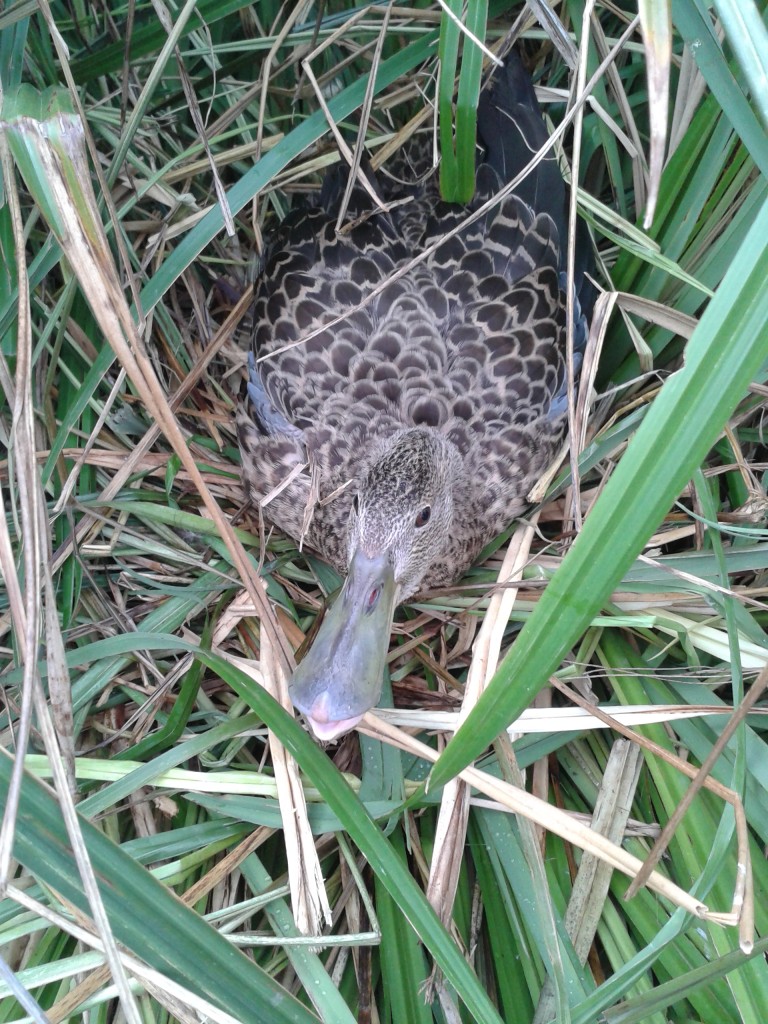Breeding birds; what can we expect in the early season?
There is a surprising amount of species kept at WWT Slimbridge that even now, are preparing for the 2016 breeding season!
As we've discussed before, our birds come from all over the world, and their breeding seasons are stimulated by more than just seasonal day length... Species can be stimulated to breed by precipitation and food availability as well as prevailing temperatures and day length. A combination of any of these can often push some of our species to reproduce very early in the UK season.
To aid with this seasonality, at WWT Slimbridge we make specific efforts to feed a high protein pellet in the summer and low protein pellet in the winter. This small detail can help the birds to identify the season and can limit unnecessary egg production. With such a mild autumn and winter 2015-2016 however, we are anticipating some early efforts from birds that fattened up for winter, and never lost weight!
The Nene (Hawaiian geese) never fail to breed exactly when they want, exhibiting one of the strongest urges towards nest and breeding fidelity of any of our species here... They are establishing age-old territories as we speak. These birds can regularly return to the same nest site year after year, and widowed birds will often bring their new partners. Juveniles will also try to locate their nests in similar areas to where they were hatched, and so it often transpires that we have queues of Nene pairs in certain areas!

South African black ducks also nest exceptionally early. These southern hemisphere mallard-types can breed from early January. This year we didn't get our 2016 breeding pair into a breeding pen before the 10th February. They were giving off all the right signs; spending time investigating corners, perching together on logs, and generally proving inseparable. The second they were released into the breeding pen they began the standard Anas display postures where the male stretches his neck up, plumps his breast, and emits a "wheheck!" The female follows on, violent head bobbing with a constant and urgent 'quack'. She currently has 5 eggs. It didn't take them long!

Freckled duck can nest all year round at WWT Slimbridge, they really do go on and on! Interestingly the breeding pairs and groups all moulted at different times, with one group of 2.3 moulting in June, another group of 1.2 moulting in July, and the last 1.1 not until September! All the females laid several clutches of eggs, and despite their copious use of down still had enough to make several nest clouds throughout the season! I've pulled out a little of the down in this photo to show you its structure. You can see each individual feather, interlocking gently with the next to provide vital warmth and aeration. I find it fascinating to think of all the layers that go into keeping a duck warm: from the fat to the skin to the down to the feathers to the preening oil.

Cape shovelers will also go much earlier than other Northern shoveler species. This nest was in the first week of April 2014, and boy was she a feisty one! I soon learnt to leave her to her own devices as shovelers can defecate on their eggs when stressed which can cause the eggs to addle (rot.) I've never found two shoveler females to be alike in temperament. They all appear to have a unique personality bourne out of their rearing environment and breeding environment. It soon became apparent that this female would charge anything that approached her nest, and this behaviour was detrimental to her incubation quality. We learnt that she needed an individual species pen to maximise her potential!

In conclusion therefore, there's so much to look forward to! The daffodils are flowering, the days are lengthening and the birds are laying. I cannot wait for the duckling season to be upon us again at WWT. It's the best feeling in the world!

